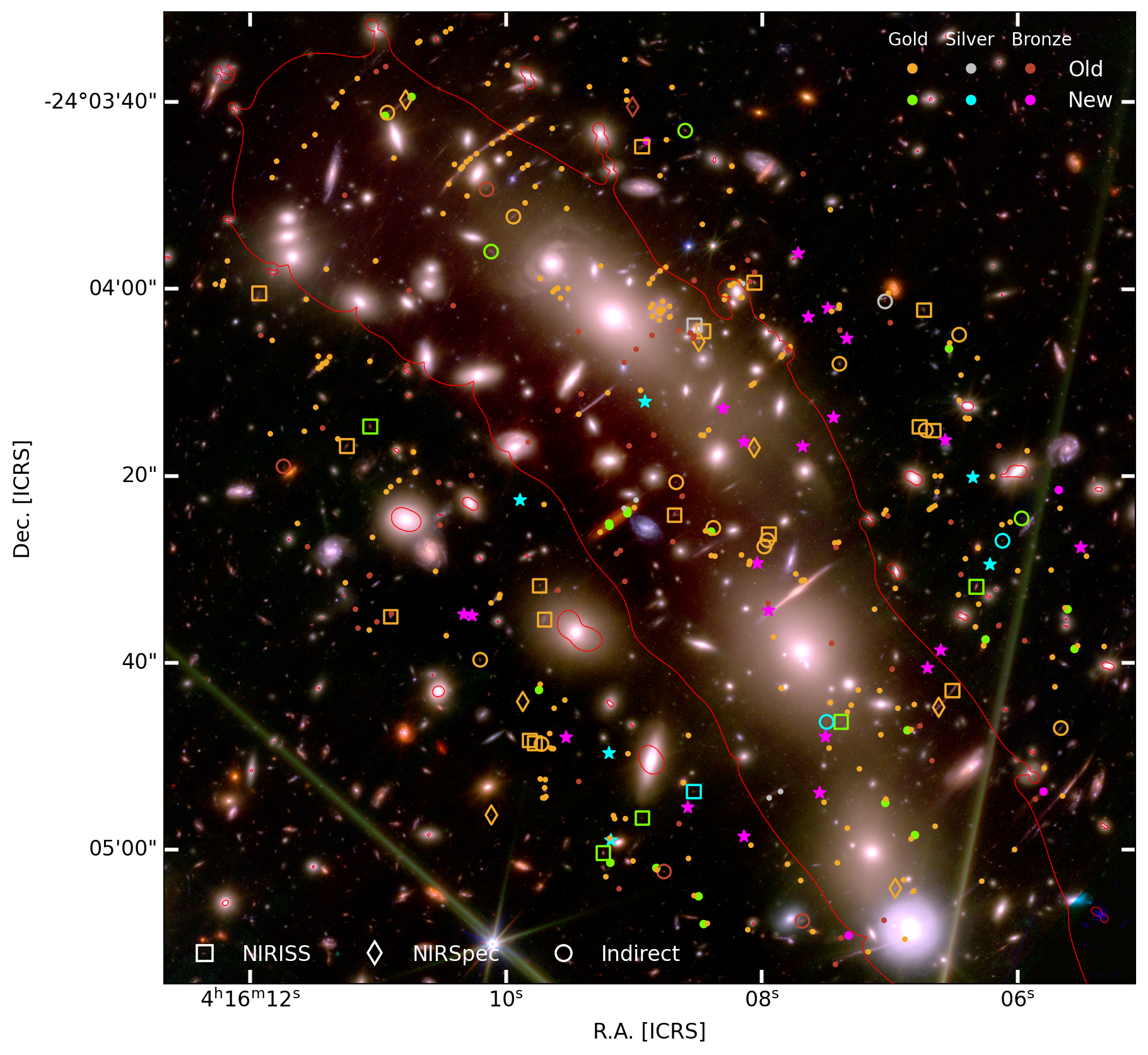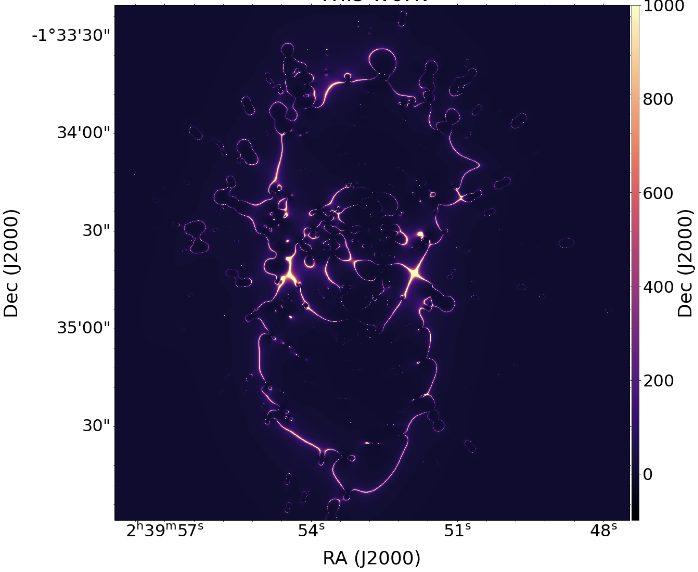MACS J0416.1-2403 strong lensing model
CANUCS: Constraining the MACS J0416.1-2403 Strong Lensing Model with JWST NIRISS, NIRSpec and NIRCam
Rihtaršič et al. 2025, A&A, 696, A15
We present an updated strong lensing model of the galaxy cluster MACS J0416.1-2403 with the largest sample of multiple images with spectroscopic redshifts in a galaxy cluster field to date. Furthermore, we demonstrate the effectiveness of JWST particularly its NIRISS camera, for strong lensing studies. We use the JWST 's NIRCam imaging and NIRSpec and NIRISS spectroscopy from the CAnadian NIRISS Unbiased Cluster Survey (CANUCS). The cluster mass model is constrained using Lenstool software. Our new dataset, used for constraining the lens model, comprises 303 secure multiple images from 111 background sources and includes systems with previously known MUSE redshift and systems for which we obtained spectroscopic redshift for the first time using NIRISS and NIRSpec spectroscopy. The total number of secure spectroscopic systems is >20% higher than in the previous strong lensing studies of this cluster. The derived strong lensing model can reproduce multiple images with the root-mean-square distance of 0.53''. We also provide a full catalogue with 415 multiple images, including less reliable candidates. We furthermore demonstrate the effectiveness of JWST particularly NIRISS, for strong lensing studies. As NIRISS F115W, F150W, and F200W grism spectroscopy captures at least two of the [OII] 3727, [OIII] 4959, 5007, and Ha lines at 1 < z < 3 (a redshift range particularly relevant for strong lensing studies) without target pre-selection, it complements MUSE and NIRSpec observations extremely well.

